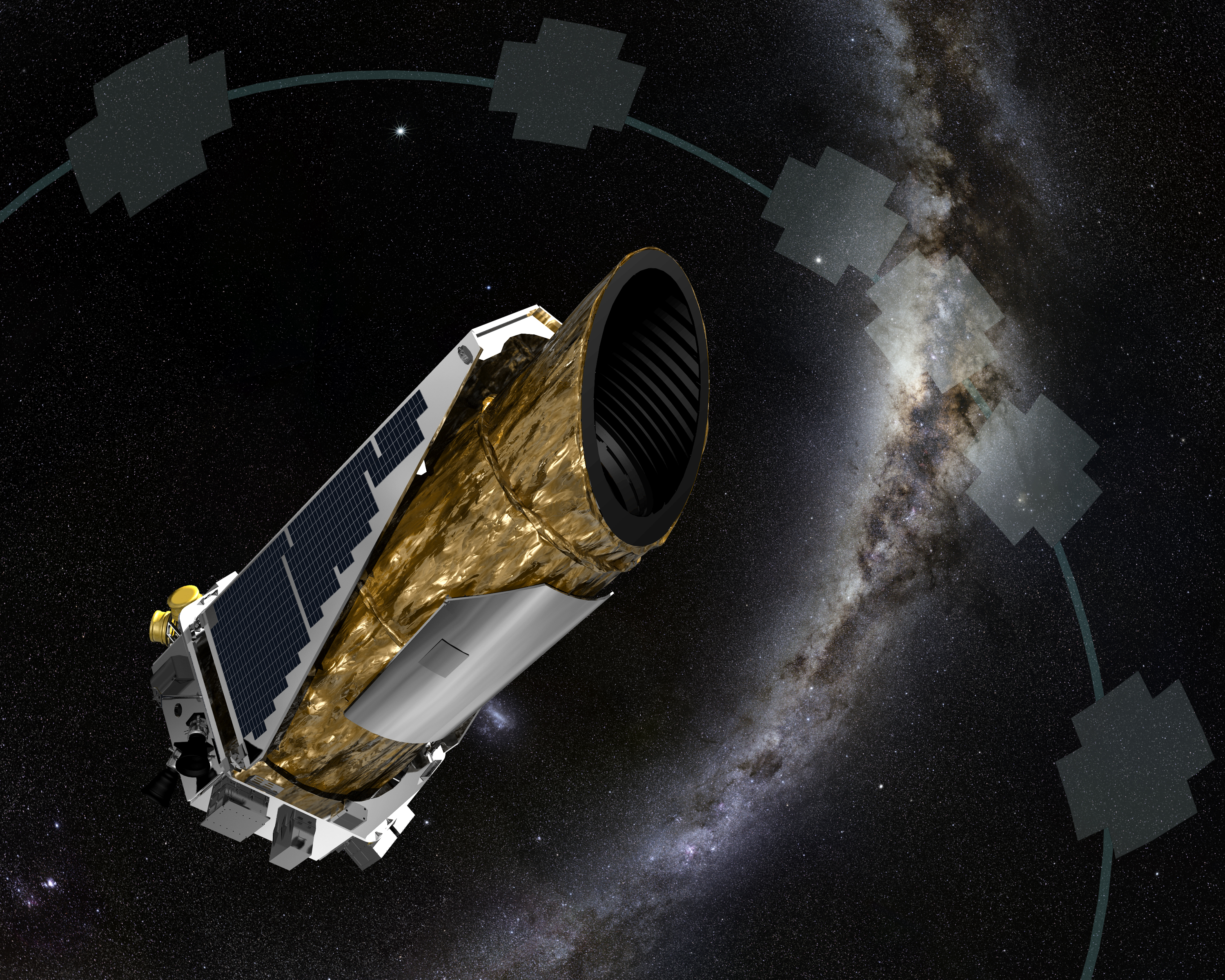
NASA's planet-hunting Kepler space telescope apparently suffered a mysterious glitch last week but is now on the mend, agency officials said.
During a scheduled contact session on July 28, Kepler's handlers discovered that the observatory's photometer — the camera-like tool it uses to detect alien planets — had turned off. But the instrument powered back on again, and Kepler resumed "autonomous science operations" on Monday (Aug. 1), mission team members said.
"We will confirm that [normal] science operations have been resumed within a week," Kepler mission manager Charlie Sobeck, of NASA's Ames Research Center in Moffett Field, California, wrote in an update today (Aug. 5). "The team is currently investigating the cause; the spacecraft is otherwise operating normally."
The $600 million Kepler mission launched in March 2009, tasked with determining how common Earth-like planets are throughout the Milky Way galaxy. The spacecraft detects alien worlds by noting the tiny brightness dips they cause when crossing their host stars' faces from Kepler's perspective.
Kepler's primary observing campaign came to a halt in May 2013, when the second of its four orientation-maintaining "reaction wheels" failed, robbing the telescope of its superprecise pointing ability. But Kepler's handlers soon figured out how to stabilize the observatory using sunlight pressure and the two remaining wheels, and, in May 2014, Kepler embarked on a new mission called K2.
The spacecraft is still hunting for exoplanets during K2, but on a more limited basis. It's also studying a wide variety of cosmic objects and phenomena, during a series of shifting 80-day "campaigns." Kepler is currently in the middle of K2's 10th campaign.
To date, Kepler has discovered more than 2,300 exoplanets — about 70 percent of all known alien worlds — along with several thousand other "candidates" that await confirmation by follow-up observations or analysis. One hundred twenty-eight of the confirmed alien planets have been spotted during the K2 mission, NASA officials said.
Get the Space.com Newsletter
Breaking space news, the latest updates on rocket launches, skywatching events and more!
Editor's Note: This article has been updated to note the correct cost of the Kepler mission, $600 million.
Follow Mike Wall on Twitter @michaeldwall and Google+. Follow us @Spacedotcom, Facebook or Google+. Originally published on Space.com.
Join our Space Forums to keep talking space on the latest missions, night sky and more! And if you have a news tip, correction or comment, let us know at: community@space.com.

Michael Wall is a Senior Space Writer with Space.com and joined the team in 2010. He primarily covers exoplanets, spaceflight and military space, but has been known to dabble in the space art beat. His book about the search for alien life, "Out There," was published on Nov. 13, 2018. Before becoming a science writer, Michael worked as a herpetologist and wildlife biologist. He has a Ph.D. in evolutionary biology from the University of Sydney, Australia, a bachelor's degree from the University of Arizona, and a graduate certificate in science writing from the University of California, Santa Cruz. To find out what his latest project is, you can follow Michael on Twitter.









